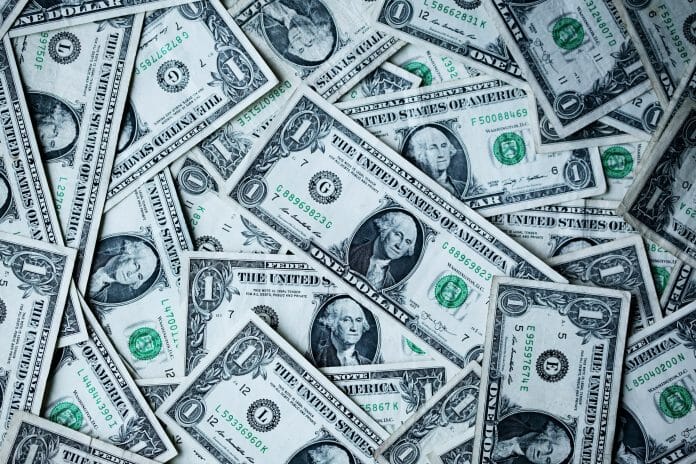By Jason Loh,
With the rise of China’s renminbi (RMB) and its internationalisation, a question mark naturally arises as to whether the US dollar (USD) as the world’s “reserve currency” can still be sustained sometime in the future.
All of this is, of course, inextricably linked to geopolitics and geo-economics.
Meanwhile here in Malaysia, should the ringgit depreciated drastically against the USD, our headline inflation might hypothetically then spike from the present figures of between -1.5 percent and 0.5 percent to beyond the projected figures of between 1 percent and 3 percent. This given our dependence on food imports.
Such a scenario might ensue in inflation outpacing our GDP’s expected recovery of between 5.5 percent to 8 percent as projected by Bank Negara in its Quarterly Bulletin for Q2 2020.
In which case, we have to hope that our current account surplus widens further on the back of manufacturing, tourism and not least high enough oil prices on the back of a weaker ringgit, no less.
A weaker currency has been a part of that trend of competitive devaluation against the USD in recent years.
In this, our currency’s value relative to the USD, whether by design or not, inevitably plays into the geo-economics game that at the end of the day is all about entrenching the USD’s hegemonic status and for a long time to come.
Now, we see this played out in Trump’s rebalancing policy under the auspices of the “America First” agenda resulting in protectionist measures by way of slapping import tariffs on Chinese-made or originated goods.
In what is a parallel to the Triffin Paradox under the gold standard exchange, reducing the US’ trade or current account deficit with China actually strengthens the USD.
The Triffin Paradox – as associated with the Belgian-American economist Robert Triffin – meant that sustaining the USD as the world’s reserve currency required the US to run external deficits against the rest of the world continuously. But then this tend to weaken confidence in the value of the USD which led to increased demands for convertibility back into gold.
Ultimately, this would eventually lead to the unravelling of the entire international payments system with the USD as the world’s reserve currency in 1971.
Back then, Richard Nixon took the US off the gold standard exchange in order to deficit finance the Vietnam War. This currency decoupling in turn led to the rest of the world following suit, by default and hence, heralding the era of fiat currencies.
Fast forward, China’s holdings of US Treasury bills, therefore, doesn’t affect the US’ ability to deficit finance. Rather it simply means the less holdings China holds, the less debt the US needs to issue to repay which in turn reduces the capital account deficit. This means there’s less demand for USD to be converted into yuan and hence the argument that it maintains the USD as the world’s leading reserve currency.
As for quantitative easing (QE) which meant that the central banks of the US, UK and Japan engaged in bond buying at the secondary markets, it ensures that yields remain low on the longer end (long-term maturity) of the yield curve.
This has also resulted in geopolitical and geo-economic repercussions. Lower interest rates in the US encouraged capital to seek higher returns in both fixed-income and equity in emerging markets. This will result in unnatural appreciation in the value of assets, leading to the real estate bubble worldwide that we saw just before the Global Financial Recession (GFC) of 2008.
At the same time, cheaper borrowings resulted in speculative activities in commodities including staple food imports such as wheat which fed into the escalating food inflation in the importing countries that ignited the Arab Spring in the aftermath of the 2008 GFC.
But QE also entrenched the dominant status of the USD by rallying the domestic stock market. The corporate share buy-backs, for instance, soared the dividend pay-outs which transmitted into consumer sentiment that re-established the pattern of imports from the rest of the world.
In other words, QE with its depreciating impact on the USD didn’t portend the end of the currency’s dominance. On the contrary, QE enabled a new round of USD-based activities to influence the global financial markets with economic ramifications.
At about the same time, however, China had begun concerted efforts aimed at the internationalisation of the RMB. Its entry into the World Trade Organization (WTO) in 2001 marked its maturing into a full-fledged member of the international economic order. This could be seen in the bilateral swap arrangements and cross-border settlements in RMB which among other things minimise transaction costs.
The UK’s openness in 2011 to host an off-shore centre for the internationalisation of the RMB boosted the currency’s status vis-à-vis the USD.
More recently, the One Belt, One Road (OBOR) mega-project spanning three major continents and the world’s longest modern land bridge as well as China’s growing outreach and debt diplomacy to Africa and the Pacific certainly served to elevate the status of the RMB as a potential rival and serious competitor that can challenge the USD’s currency dominance.
However, it could be argued that the backlash from debtor nations in response to what is known as “debt trap” – rightfully or wrongfully – has diminished and contained the RMB’s prestige somewhat.
So, all in all, the USD will continue long into the foreseeable future as the world’s reserve currency even amidst QEs and the internationalisation of the RMB.
Jason Loh Seong Wei is Head of Social, Law and Human Rights at EMIR Research, an independent think tank focused on strategic policy recommendations based on rigorous research.









